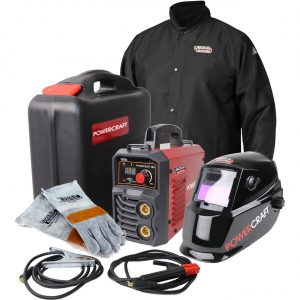Welding processes are used to join metals, thermoplastics, wood, and other materials together. They can also be used to create artwork. These processes create an arc between a consumable metal electrode and the material being welded. On the other hand, a resistance welding process uses strong pressure to weld the two metal sheets together. For professional welding services, check out at www.toolkitdepot.com.au/welding now.
Solid-phase processes
 Solid-phase welding processes are a versatile option for joining metals together. Because they do not alter the parent material’s physical or mechanical properties, they are widely used in industrial applications. In particular, they are useful for heat-sensitive materials. Here are some of the benefits of solid-phase welding processes:
Solid-phase welding processes are a versatile option for joining metals together. Because they do not alter the parent material’s physical or mechanical properties, they are widely used in industrial applications. In particular, they are useful for heat-sensitive materials. Here are some of the benefits of solid-phase welding processes:
When used in autogenous mode, solid-phase welding does not require filler. However, if the filler material is different from the parent metal, it is called heterogeneous welding. There are three main types of solid-phase welding: homogeneous, autogenous, and mixed-phase.
Electric arc
Electric arc welding is a method of joining two pieces of metal using an electric current. This process uses a supply electrode (anode) and a return electrode (cathode). Both electrodes are made of metal and are placed at different distances from each other. The current flows between these two electrodes, and an optimal distance is required to allow electrons to move from the cathode to the anode. The kinetic energy of these electrons is then converted into heat energy.
The metal pieces to be joined should be securely held in their fixture. Next, an electrode holder should be placed on the workpiece at an angle of sixty to eighty degrees. The electrode holder should be properly polarized, and the proper current should be used. Once the electrode is properly placed, the welder will begin the process.
TIG
TIG welding is a versatile process that uses gas to weld metallic objects. There are three basic methods for TIG welding, depending on the type of metal being welded. These include manual and automatic welding processes. Manual welding uses the push technique, which lowers the risk of operational defects. This technique is generally performed at angles of around 15 degrees. For professional welding services, check out at www.toolkitdepot.com.au/welding now.
TIG welding is a process that requires more skill and specialized equipment than other welding techniques. Its benefits make it ideal for overhangs and awkward angles, and its shielding gas is colourless and produces very little smoke. But, it is not without drawbacks: the weld bead can become contaminated if the polarity is not correct and the welding process takes longer.
Stick
Stick welding, also known as SMAW, is one of the oldest forms of welding. It is also one of the most widely used processes. While people who use MIG welding equipment may think that stick welding is a dying art, big companies are still investing millions of dollars into developing new electrodes and stick welding techniques.
Before using a stick welder, it is best to practice on a scrap piece of metal to figure out which hand position to use and which motions to make. A good practice exercise is to try striking an arc. To achieve this, insert the electrode into the electrode holder, turn on the welder, and then drag the electrode tip quickly across the metal. The motion should resemble striking a match.
Flux-coated rods
Flux-coated welding rods are made with a layer of chemicals that acts as a flowing, purifying, and cleaning agent. The coating on these rods protects the weld pool from atmospheric contamination and helps remove impurities that float on the pool’s surface when it is hot. This contributes to a strong welded joint.
Flux-coated welding rods can be made of various metals and are a good choice for many welding applications. These rods can be used in any vertical or horizontal position, and you can even use different types of metals or use them for gouging.
Filler metals
Filler metals are metals that are added to a joint during the welding process. These metals can be added by brazing, welding, or soldering. These types of metals are very useful in repairing and reinforcing joints. They also provide strength and elasticity to the finished product.
Filler metals are important in welding because they enhance the weld’s integrity. For example, chromium can help ensure corrosion resistance and improve weld strength. Nickel and molybdenum can also provide good high-temperature performance. Silicon can also help maintain the fluidity of a weld pool and can stabilize austenite. Ferrite, on the other hand, refines the grain structure and makes the weld more durable.
Robotic welding
Robotic welding involves using programmable, mechanized tools to complete welding operations. This completely automates the process. The robot performs the weld and handles the part to be welded. Its use is gaining in popularity among engineers and manufacturers. This type of welding is more efficient and cost-effective than ever before. It can produce parts much faster than traditional welding methods. It can also reduce the number of employees required in a facility. For professional welding services, check out at www.toolkitdepot.com.au/welding now.
